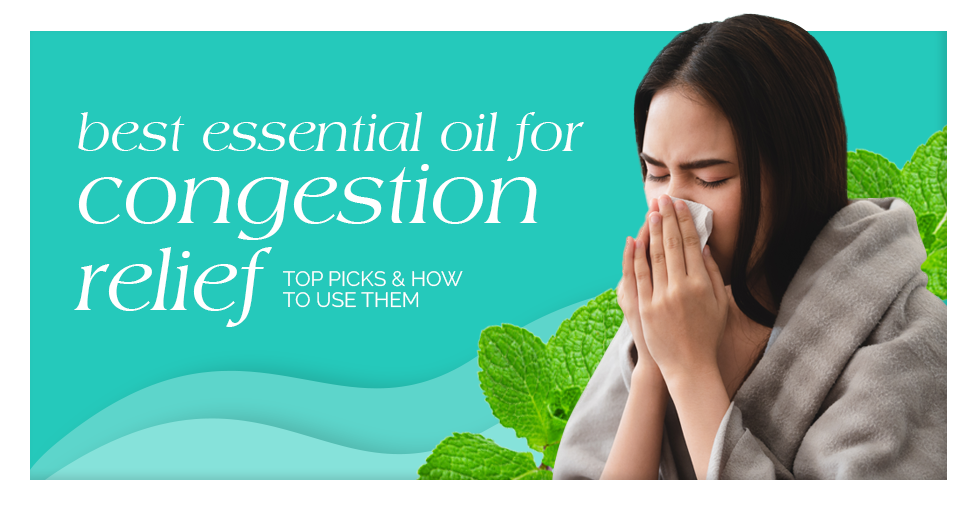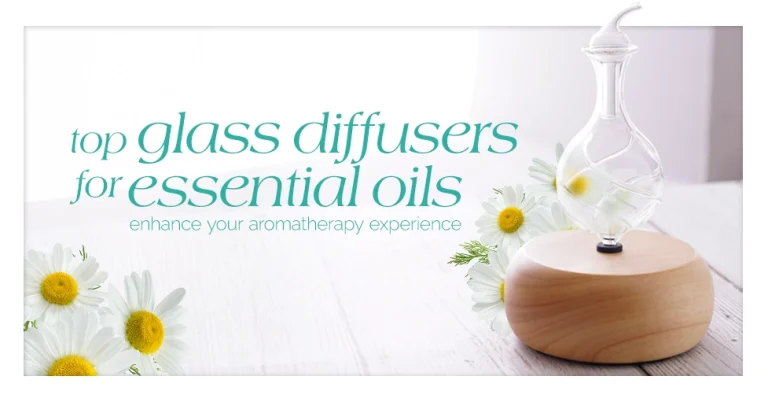Best Essential Oil for Congestion Relief: Top Picks and How to Use Them
Are you constantly battling a stuffy nose and looking for a natural remedy that actually works? Dive into our ultimate guide on essential oils for congestion relief, where you’ll discover the most effective oils and practical tips to breathe easier and enhance your respiratory health naturally.
From the invigorating scent of eucalyptus to the soothing touch of lavender, we’ll explore how these powerful plant extracts can clear your nasal passages, reduce inflammation, and provide lasting relief. Whether you’re dealing with a cold, allergies, or sinusitis, our comprehensive insights will equip you with the knowledge to use essential oils safely and effectively, transforming your wellness routine and helping you breathe freely once again.
Powerful Remedies for Congestion Relief
- Congestion is primarily caused by infections, allergies, and sinusitis, leading to blocked nasal passages that require proper management.
- Eucalyptus, peppermint, lavender, tea tree, and oregano oils are effective essential oils for relieving congestion through various mechanisms, including anti-inflammatory and antimicrobial properties.
- Safe usage of essential oils includes methods like steam inhalation, topical application, and diffusion, accompanied by safety precautions such as dilution and patch testing.
- Nebulizing diffusers are highly effective for dispersing essential oils into the air, providing powerful relief from congestion symptoms by enhancing respiratory comfort and reducing allergens in the environment.
Understanding Congestion and Its Causes

Congestion occurs when the nasal passages become blocked due to inflammation or swelling. This often results from infections like the common cold or from allergies that cause the immune system to react to allergens, leading to inflammation in the nasal passages. The most common source of nasal congestion is the common cold, caused by viruses, and these typically resolve within a week.
Allergies are another major culprit. When the body encounters allergens like pollen or dust, it overreacts, causing inflammation and swelling in the nasal passages. This reaction can lead to chronic sinus congestion, which can be quite debilitating if not addressed properly. Furthermore, sinus infections, or sinusitis, can develop as a complication of colds or allergies, resulting in prolonged nasal congestion.
Sinusitis symptoms can vary depending on the duration and cause. Acute sinusitis, often resulting from viral infections, typically lasts less than four weeks. Chronic sinusitis, on the other hand, can last much longer and often requires a more integrated approach to treatment. Understanding these root causes is crucial for effectively addressing and managing congestion.
Key Chemical Components in Essential Oils that Can Help with Congestion
| Chemical Component | Essential Oil Source | Potential Effect on Congestion | Mechanism of Action | Reference |
|---|---|---|---|---|
| 1,8-Cineole (Eucalyptol) | Eucalyptus, Rosemary | Decongestant, anti-inflammatory | Reduces airway inflammation and mucus production | de Groot & Schmidt, 20161 |
| Menthol | Peppermint | Relieves nasal congestion | Activates cold receptors, provides a cooling sensation and improves airflow in the nasal passages | Desam et al., 2017 |
| Camphor | Rosemary, Camphor | Decongestant, mild anesthetic | Provides a cooling effect and can reduce nasal congestion by interacting with sensory nerves | Tadtong et al., 20152 |
| Thymol | Thyme, Oregano | Antimicrobial, anti-inflammatory | Inhibits the growth of bacteria and viruses, reducing infections that cause congestion | Soković et al., 2010 |
| Limonene | Lemon, Orange | Mucolytic, antioxidant | Breaks down mucus and reduces oxidative stress, easing breathing | Yang et al., 20103 |
| Alpha-Pinene | Pine, Rosemary | Bronchodilator, anti-inflammatory | Expands the airways, reduces inflammation in the respiratory tract | Tadtong et al., 20154 |
These components have shown effectiveness in various studies for relieving congestion through their anti-inflammatory, antimicrobial, mucolytic, and soothing properties, which can be beneficial for individuals suffering from respiratory conditions.
Top Essential Oils for Congestion Relief
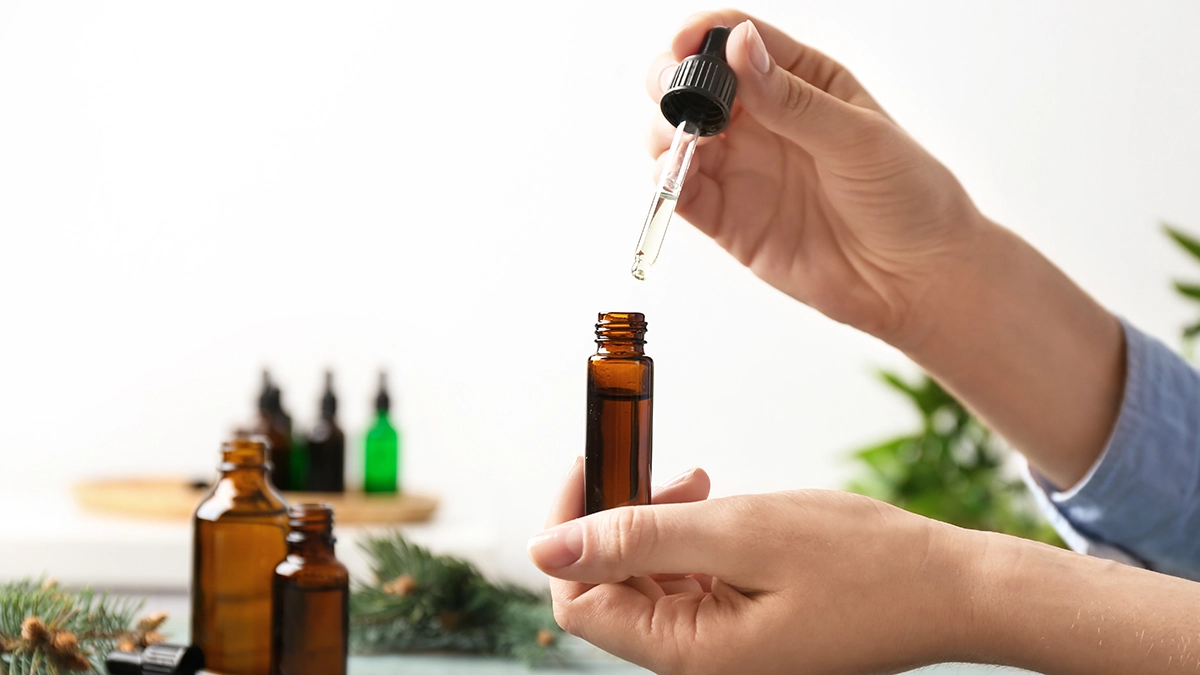
Essential oils are a natural and effective way to relieve congestion. Certain essential oils like eucalyptus oil and peppermint oil are particularly known for their decongestant properties.
In this section, we’ll explore the top essential oils for congestion relief and how they can help you breathe easier.
Eucalyptus Oil
Eucalyptus oil is renowned for its ability to open up the airways and improve sinus drainage. Its antimicrobial properties make it particularly effective against bacteria that cause respiratory conditions. The decongestant effects of eucalyptus oil can help clear mucus from the airways, providing significant relief from congestion symptoms.
Overall, eucalyptus oil supports respiratory health through its anti-inflammatory and antimicrobial properties. Incorporating eucalyptus essential oil into your routine offers a natural way to alleviate sinus congestion and breathe more freely.
Peppermint Oil
Peppermint oil is another powerhouse when it comes to relieving congestion. The cooling sensation associated with peppermint oil helps ease breathing and can provide immediate relief. This oil helps open airways and clear mucus, making it highly effective for congestion relief.
Peppermint essential oil also has strong antimicrobial effects, contributing to its ability to alleviate congestion. Using peppermint oil allows you to enjoy its numerous benefits and find relief from those annoying congestion symptoms.
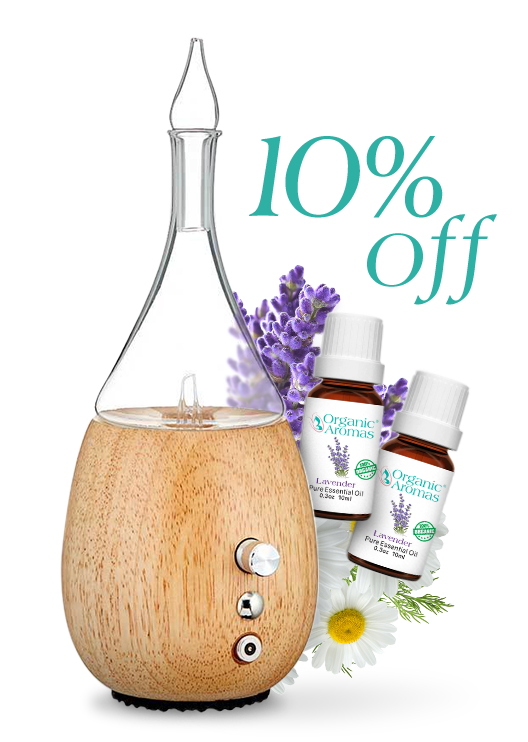
Join Now and Get a Coupon for 10% Off!
Lavender Oil
Lavender oil is well-known for its neuroprotective and relaxing effects, which can aid in easing breathing and reducing inflammation in the nasal passages due to its anti inflammatory properties. This oil, along with rosemary oil, can help improve breathing and reduce inflammation, making it a versatile addition to your congestion relief toolkit.
Furthermore, lavender oil promotes relaxation, which can indirectly help ease breathing difficulties associated with congestion. Incorporating a few drops of this soothing essential oil into your routine offers calming and anti-inflammatory benefits.
Tea Tree Oil
Tea tree oil is celebrated for its therapeutic properties and effectiveness against various pathogens that contribute to congestion. This essential oil has strong antibacterial, antiviral, and antifungal properties, making it beneficial in combating the microorganisms responsible for congestion.
Tea tree oil is effective in relieving congestion when used in diffusers or through steam inhalation. This versatile oil can be a powerful ally in your fight against congestion.
Oregano Oil
Oregano oil is known for its natural antihistamine properties, which can help reduce sneezing and nasal congestion. This essential oil acts as a natural antihistamine, helping to relieve sneezing and nasal blockage associated with congestion.
Using oregano oil allows you to benefit from its antihistamine qualities and find relief from nasal congestion symptoms. This oil is a valuable addition to your natural remedies for congestion.
How to Use Essential Oils for Congestion

Essential oils are generally safe when used correctly. However, improper usage can lead to serious health issues. It is crucial to prioritize safety and follow proper guidelines when using essential oils for congestion relief.
Three effective methods include steam inhalation, diffusion, and topical application.
Steam Inhalation
Steam inhalation is a popular method for using essential oils to relieve congestion. Inhaling the steam from essential oils like eucalyptus or peppermint can create a sensation of relief and help clear nasal passages. Perform steam inhalation by adding a few drops of essential oil to a bowl of hot water, covering your head with a towel, and inhaling the steam deeply.
This method helps open up the nasal passages and relieve sinus pressure. It’s particularly effective for immediate relief from a stuffy nose and other symptoms of sinus congestion.
Steam inhalation can also provide stress relief and help with respiratory issues like a common cold or annoying cough.
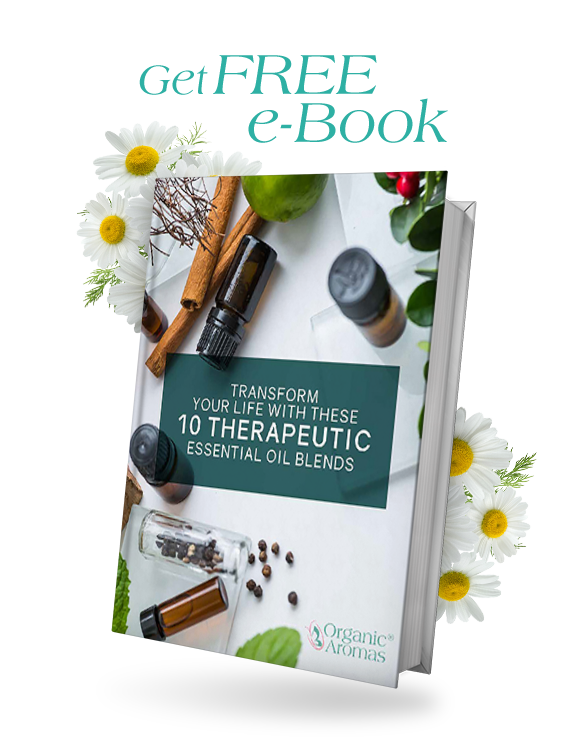
Sign Up to Get Your FREE Essential Oils e-Book Here
Diffusion
Using a diffuser distributes essential oils into the air, enhancing respiratory comfort and reducing allergens in the environment. This method allows essential oils to disperse into the air, creating an aromatic atmosphere that may help relieve congestion.
Nebulizing diffusers, like those from Organic Aromas, are particularly effective. They are powerful, high-quality, and add a touch of elegance to any room. Using a diffuser allows you to enjoy the therapeutic benefits of essential oils and support your respiratory health.
Topical Application
Topical application involves applying diluted essential oil directly to the skin. This method is effective for targeted relief of congestion symptoms. Essential oils should always be diluted with a carrier oil, such as coconut oil or sweet almond oil, to prevent skin irritation.
For adults, the suggested dilution is between 20 to 30 drops of essential oil in one ounce of carrier oil. For children under six, only one drop of essential oil is recommended. Following these guidelines ensures the safe topical use of essential oils for relieving congestion.
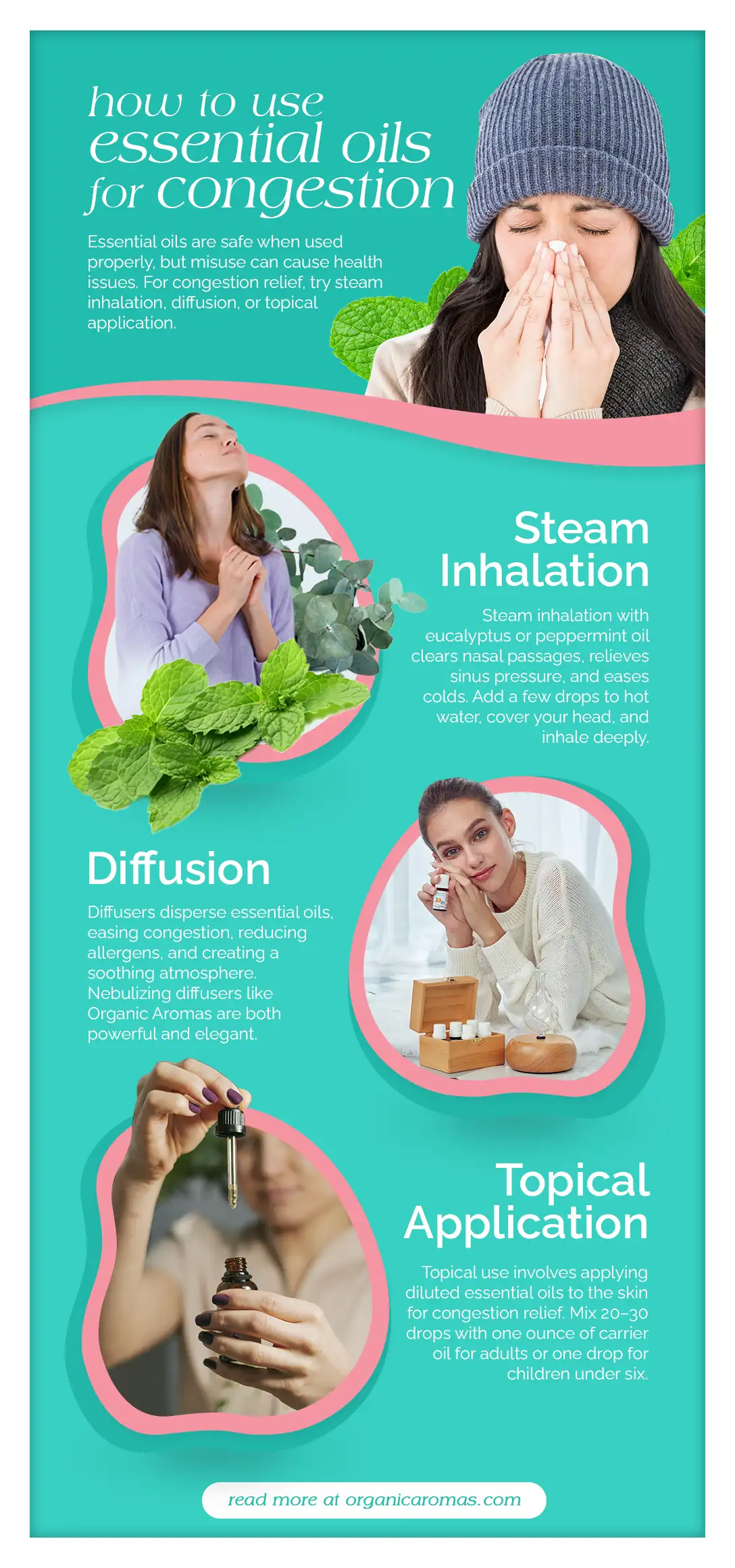
Safety Precautions When Using Essential Oils
Using essential oils can be highly beneficial, but it’s essential to exercise caution to prevent adverse effects.
Important safety measures include dilution guidelines, patch testing, and avoiding the ingestion of essential oils.
Dilution Guidelines
Diluting essential oils with a carrier oil before applying them to the skin is crucial to prevent irritation. Carrier oils like coconut or sweet almond oil are recommended for safe application on the chest and neck area.
When diluting for children aged six and older, the maximum number of drops of essential oil recommended is six drops. Always ensure the essential oils are properly diluted to maintain safety and efficacy standards.
Patch Testing
Conducting a patch test is crucial before using essential oils extensively to detect any allergic reactions. A skin patch test involves applying diluted oil to the inner elbow and waiting 48 hours to check for reactions. This test can reveal potential allergic reactions and help ensure that the essential oil will not trigger symptoms.
Conducting a patch test ensures the safe incorporation of essential oils into your routine.
Avoiding Ingestion
Ingest essential oils is highly discouraged due to potential toxic effects and insufficient safety regulations. Essential oils are not regulated for safety in consumption, and ingestion can lead to toxicity. Given the serious risks, it is strongly advised to avoid the ingestion of essential oils.
Always use essential oils topically or through inhalation to prevent any adverse effects.
Holistic Approaches to Complement Essential Oils

Integrating holistic methods with essential oils can enhance overall health and well-being. Additional holistic approaches include hydration and humidification, herbal teas and honey, and consulting healthcare professionals.
Hydration and Humidification
Maintaining hydration and using humidifiers are essential practices for keeping nasal passages moist and reducing congestion. Using a humidifier can maintain moisture in the air, which helps alleviate cough and congestion symptoms by soothing irritated airways.
Incorporating steam inhalation and ensuring adequate hydration can significantly improve nasal congestion and overall respiratory health. These methods complement the use of essential oils and enhance their effectiveness.
Herbal Teas and Honey
Herbal teas, particularly those containing peppermint, can provide soothing effects for the throat and may reduce cough intensity. Peppermint tea can help soothe the throat and may have additional benefits from its menthol content.
Combining peppermint tea with honey can enhance its soothing properties and provide a calming effect that may ease cough symptoms. This natural way of treating congestion can be a comforting addition to your routine.
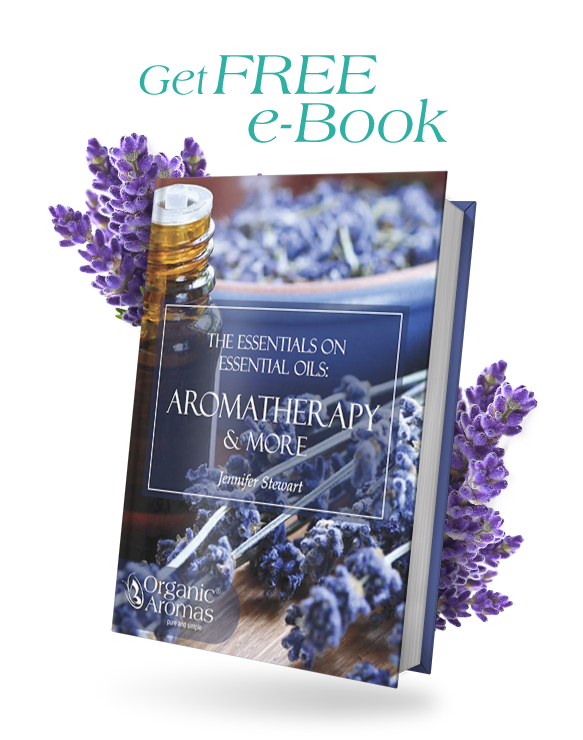
Sign Up to Get Your FREE
e-Book Here…
Consultation with Healthcare Professionals
Engaging with healthcare providers ensures a safe and effective combination of essential oils with standard medical treatments. Consulting healthcare professionals can provide tailored treatment strategies that effectively combine essential oils with conventional therapies.
Seeking guidance from healthcare providers can lead to a more tailored approach that combines essential oils with conventional treatments. This ensures that you are using essential oils in a way that is safe and beneficial for your specific health needs.
The Ultimate Guide to Essential Oils for Congestion Relief
In summary, essential oils offer a natural and effective way to relieve congestion. Understanding the causes of congestion and selecting the right essential oils, such as eucalyptus, peppermint, lavender, tea tree, and oregano, can make a significant difference in your respiratory health. By using methods like steam inhalation, diffusion, and topical application, you can safely incorporate these oils into your daily routine.
Remember, safety is paramount. Always dilute essential oils properly, conduct patch tests, and avoid ingestion. Complementing essential oils with holistic practices like hydration, humidification, and herbal teas can further enhance their benefits. Consulting healthcare professionals ensures a safe and personalized approach to using essential oils. Embrace these natural remedies and breathe easier with the power of essential oils.

Join Our Exclusive Member Club to get Big Discounts!
Frequently Asked Questions
What are the best essential oils for congestion relief?
For effective congestion relief, eucalyptus oil and peppermint oil are highly recommended due to their decongestant properties, along with lavender, tea tree, and oregano oils for their additional benefits. Incorporating these essential oils can help alleviate congestion symptoms effectively.
How should essential oils be used to relieve congestion?
To relieve congestion, essential oils can be effectively used through steam inhalation, diffusion, or topical application, each offering unique benefits. Ensure to follow safe usage guidelines for optimal results.
Are there any safety precautions I should take when using essential oils?
It’s crucial to dilute essential oils with a carrier oil for safe topical application and to conduct a patch test to identify any allergic reactions. Avoid ingesting essential oils, as they can be toxic.
Can I combine essential oils with other holistic practices for better results?
Combining essential oils with holistic practices, such as hydration and herbal teas, can enhance their effectiveness and support your overall health. It’s a beneficial approach to consider for achieving better results.
Is it safe to use essential oils for children?
It is safe to use essential oils for children if they are properly diluted and safety measures are followed, particularly for those under six, where only one drop is recommended. Always consult a healthcare professional before use.
- Groot, A., & Schmidt, E., 2016. Essential Oils, Part III: Chemical Composition.. Dermatitis : contact, atopic, occupational, drug, 27 4, pp. 161-9
- Tadtong, S., Kamkaen, N., Watthanachaiyingcharoen, R., & Ruangrungsi, N., 2015. Chemical Components of Four Essential Oils in Aromatherapy Recipe. Natural Product Communications, 10.
- Yang, S., Jeon, S., Lee, E., Shim, C., & Lee, I., 2010. Comparative study of the chemical composition and antioxidant activity of six essential oils and their components. Natural Product Research, 24, pp. 140 – 151.
- Tadtong, S., Kamkaen, N., Watthanachaiyingcharoen, R., & Ruangrungsi, N., 2015. Chemical Components of Four Essential Oils in Aromatherapy Recipe. Natural Product Communications, 10.

